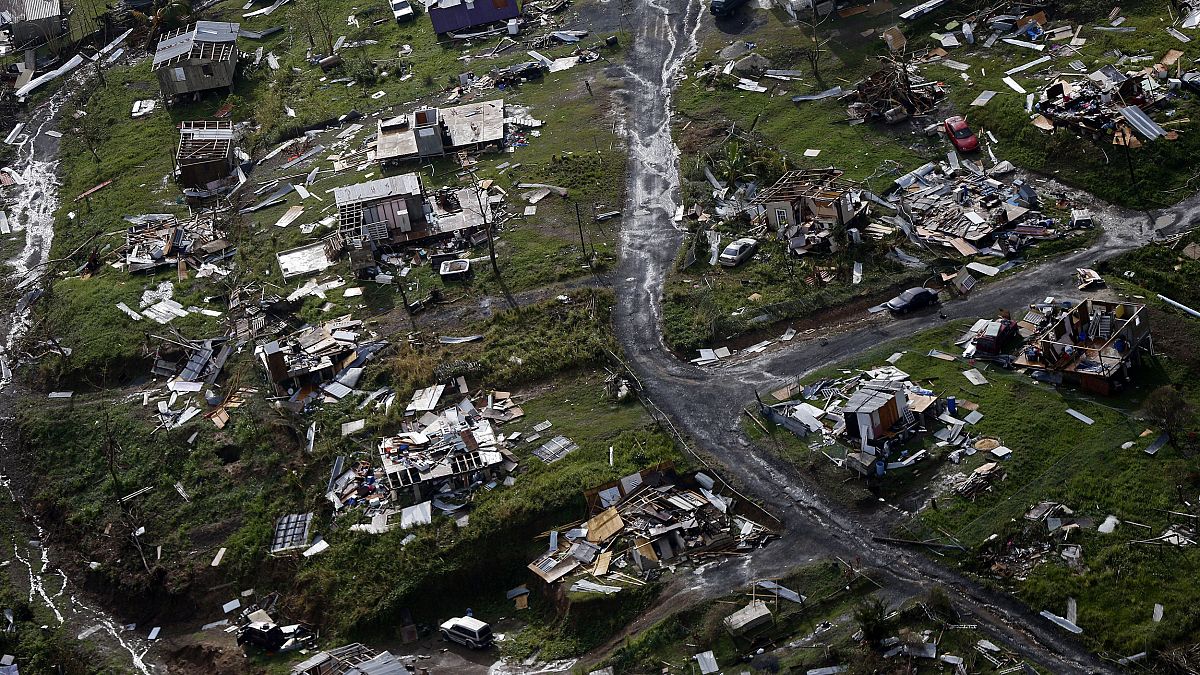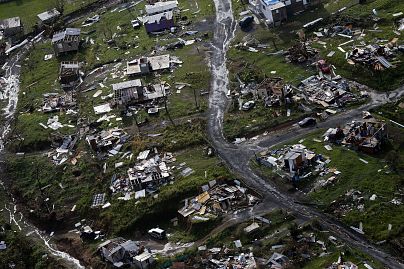"Our results indicate that the official death count of 64 is a substantial underestimate of the true burden of mortality after Hurricane Maria."
Thousands more people died after Hurricane Maria ravaged Puerto Rico in September than the island's government acknowledged, according to a Harvard study published Tuesday.The official estimate issued by the Puerto Rican government was that 64 people died in the storm.
But by comparing the overall death rate on the island to the same period the year before, the Harvard study found that 4,645 more people died between Sept. 20 and Dec. 31, 2017, than in that same period in 2016.That represents a 62 percent increase in the island's mortality rate over that year, which the study attributed to Maria."Our results indicate that the official death count of 64 is a substantial underestimate of the true burden of mortality after Hurricane Maria," the researchers wrote in the study published in the New England Journal of Medicine.
And the researchers added that because they could not look into each death, they adjusted their calculations and estimated the number of actual deaths could exceed 5,740.
Many of the deaths they found on the U.S. territory were caused by the interruption of health care, electricity and utility services after the hurricane decimated the island.Hurricane Maria made landfall on Puerto Rico as a Category 4 hurricane on Sept. 20, knocking power out to the entire island and leaving long-lasting damage in its wake.
"The question is why did it happen? Why did people die? Well, they died mostly because they didn't have access to medical care, they didn't have access to their medication, there was no pharmacy open, they didn't have running potable, clean water," said Domingo Marqués, an author of the study and associate professor of psychology at Albizu University San Juan.Marqués, who himself was without power for 100 days and without water for two months, said he and his students first started talking to families and providing psychological support seven days after the storm.
It was then that he immediately realized "there was no way" the government's official number could be accurate, he said.
"We had cases where people left the bodies of their loved ones in a car and because they had no access because of landslides or flooding or destroyed roads. People who buried their loved ones in their backyard," he said.Marqués said he hopes the Puerto Rican government uses the data, not only for its implications on the death toll, but also as a measure of the suffering and needs of the people who survived.
The researchers, with the Harvard T.H. Chan School of Public Health and other institutions, surveyed nearly 3,300 households across Puerto Rico and asked people about causes of death, displacement and loss of infrastructure. The study estimated a mortality rate of 14.3 deaths per 1,000 persons during the three months after the hurricane hit.That toll was then extrapolated to the island as a whole and compared to the mortality rate for the same time period in 2016, according to the study.
"Our estimates also indicate that mortality rates stayed high throughout the rest of the year," the researchers wrote.
While the official death toll remains at 64, several news organizations had already placed the number of island deaths from Hurricane Maria at more than 1,000. And after months of pressure, the Puerto Rican government ordered an independent in-depth review of the death toll, calling in George Washington University to lead it
.The results are expected this summer, Mina Radman, a spokeswoman for the university's Milken Institute School of Public Health, said in an email, adding that the institute did not have anyone available to comment on the Harvard study.
In a statement on the new study, Carlos R. Mercader, executive director of the Puerto Rico Federal Affairs Administration, said:"The government of Puerto Rico welcomes the newly released Harvard University survey and we look forward to analyzing it. As the world knows, the magnitude of this tragic disaster caused by Hurricane Maria resulted in many fatalities. We have always expected the number to be higher than what was previously reported. That is why we commissioned The George Washington University to carry out a thorough study on the number of fatalities caused by Hurricane Maria which will be released soon. Both studies will help us better prepare for future natural disasters and prevent lives from being lost."
Just a month ago, an island-wide blackout hit the island — seven months after the storm.
The mayor of San Juan, Carmen Yulín Cruz, an outspoken critic of the local and federal response to the hurricane, said in a series of tweets that the estimated death toll was"unthinkable" and asked if the government of Gov. Ricardo Rosselló will now believe the numbers are higher."There are many deaths caused by poor crisis management," she tweeted. Adding in another post, "It took too long to understand the need for an appropriate response was NOT about politics but about saving lives."
Speaking about the death toll estimated by the study, Rosselló said during a news conference on disaster management Tuesday that, "From the beginning, we said that the number [of dead] was going to increase.
"He said he welcomed "all studies" and noted the decision to bring in George Washington University to conduct an independent review."
Certainly, one of the main objectives that we've had and that we've established is to significantly improve our public health care response to a natural disaster with the objective not only to have better clearer data in the death toll, that is just part of it, the main part of it is to have a better overall response so that we can save more lives, so that we can attend to people's needs," he said."We want the real number to come out," he added. "We had a protocol that really was sub-par and we recognize it, and now towards the future we want to make sure that's it's effective."

